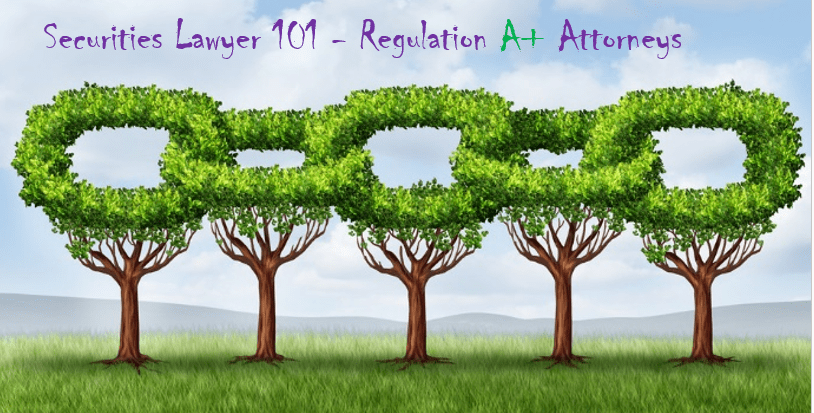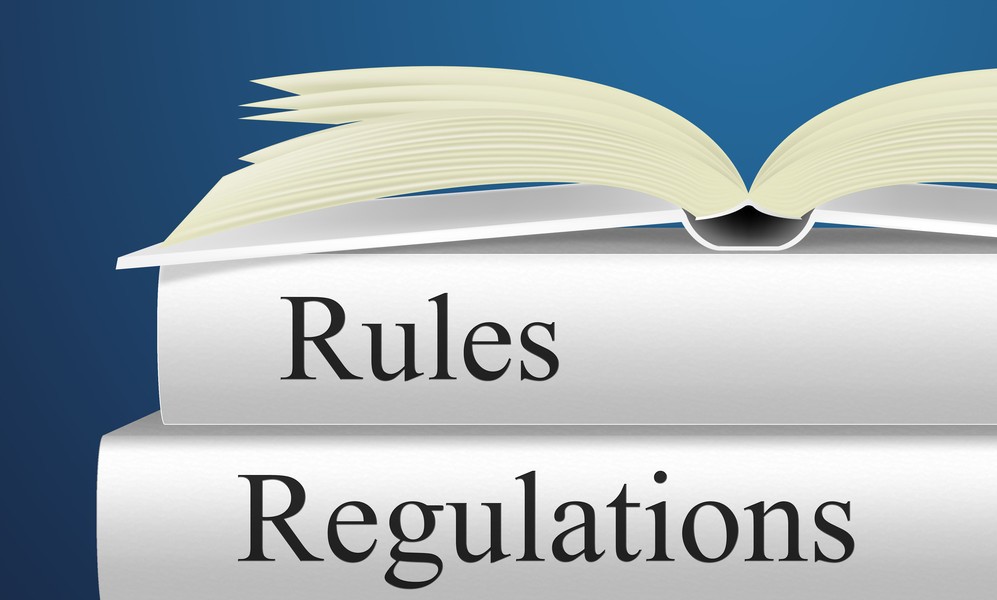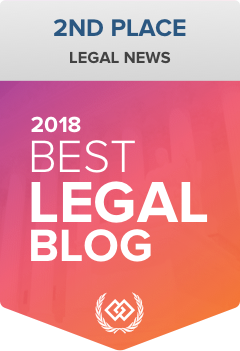Does Offering Integration Apply in a Regulation A Offering?
 The Regulation A + offering integration rules prevent companies from improperly avoiding the SEC’s registration statement requirements by dividing a single securities offering into multiple securities offerings to take advantage of exemptions that would not be available for the combined offerings. Regulation A+ contains integration safe harbor provisions. Under Rule 251(c), a Regulation A+ offerings will not be integrated with prior offers or sales of securities. Subsequent offers and sales of securities in Regulation A+ offerings will not be integrated with other securities offerings that are: Read More
The Regulation A + offering integration rules prevent companies from improperly avoiding the SEC’s registration statement requirements by dividing a single securities offering into multiple securities offerings to take advantage of exemptions that would not be available for the combined offerings. Regulation A+ contains integration safe harbor provisions. Under Rule 251(c), a Regulation A+ offerings will not be integrated with prior offers or sales of securities. Subsequent offers and sales of securities in Regulation A+ offerings will not be integrated with other securities offerings that are: Read More
Regulation A+ For Publicly Traded Reporting Companies
 Benefits of Regulation A+ Amendments
Benefits of Regulation A+ Amendments
On December 19, 2018, the Securities and Exchange Commission (the “SEC”) adopted amendments to Regulation A informally referred to as Regulation A+. The amendment allows companies that are subject to SEC reporting requirements under Section 13 or 15(d) of the Securities Exchange Act of 1934, as amended (the “Securities Exchange Act”), to conduct securities offerings using Regulation A+. The amendments to Regulation A were mandated by the Economic Growth, Regulatory Relief, and Consumer Protection Act, which became law in May 2018.
As discussed in more detail below, the amendments offer benefits to smaller reporting companies not listed on the New York Stock Exchange (“NYSE”) or NASDAQ and companies subject to SEC reporting requirements that do not qualify to, use Form S-3 or F-3 shelf registration statements. Read More
SEC Halts Alleged $1.7 Billion Unregistered Token Offering

Beginning in January 2018, Telegram Group Inc. and its wholly-owned subsidiary TON issuer began raising capital to finance their business. This included development of their own blockchain and mobile messaging application. According to the SEC, “Defendants sold approximately 2.9 billion digital tokens called “Grams” at discounted prices to 171 initial purchasers worldwide, including more than 1 billion Grams to 39 U.S. purchasers. Telegram promised to deliver the Grams to the initial purchasers upon the launch of its blockchain by no later than October 31, 2019, at which time the purchasers and Telegram will be able to sell billions of Grams into U.S. markets.”
Nasdaq’s Regulation A Seasoning Requirement
Posted by Brenda Hamilton
Nasdaq’s Regulation A Proposal

The Nasdaq Stock Market LLC (“Nasdaq”) proposed a rule that would impose listing requirements for Regulation A companies pursuant to pursuant to Section 19(b)(1) of the Securities Exchange Act of 1934 (“Exchange Act”) and Rule 19b-4 thereunder, to adopt a new initial listing requirement for any company applying to list on Nasdaq in connection with an offering under Regulation A of the Securities Act of 1933 (“Securities Act”).
On June 28, 2019, the SEC approved a change to Nasdaq Listing Rule 5210 to impose listing requirements for companies conducting offerings under Regulation A of the Securities Act of 1933 (the “Securities Act”). The amendment will take effect on July 28, 2019.
Regulation A+ Tier 2 Reporting Obligations – Going Public Lawyer
Regulation A, also known as Regulation A+, provides investors with more investment choices and issuers with more capital raising options during their going public transactions. The rules adopting Regulation A+ are mandated by Title IV of the Jumpstart Our Business Startups (JOBS) Act.
Regulation A+ expands existing Regulation A by dramatically opening new doors for capital raising for smaller companies. Regulation A+ offerings can be used in combination with direct public offerings and initial public offerings as part of a Going Public Transaction. The exemption simplifies the process of obtaining the seed stockholders required by the Financial Industry Regulatory Authority while allowing the issuer to raise initial capital. The exemption provides for two distinct offering exemptions. Tier 1 provides an exemption from SEC registration for offerings of up to $20 million. Tier 2 exempts offerings up to $50 million.
One of the most notable differences between the two Regulation A+ tiers is that issuers that conduct a Tier 2 offering will become subject to ongoing SEC reporting obligations, though such obligations are significantly less burdensome than those that apply to SEC reporting issuers filing Form S-1 Registration Statements.
Presently, issuers that conduct Both Tier 1 & Tier 2 Regulation A offerings must file a Form 2-A with the SEC every six months to report sales in the offering, and submit a final Form 1-A to the SEC within 30 days after the offering is complete. Regulation A+ eliminated Form 2-A and created Form 1-Z. Read More
Rule 506(b) Offerings

Rule 506(b) Offerings – Regulation D Offerings
Section 4(a)(2) of the Securities Act of 1933, as amended (the “Securities Act”) exempts from SEC registration, transactions by an issuer not involving a public offering. Rule 506(b) of Regulation D of the Securities Act provides a “safe harbor” under Section 4(a)(2). Rule 506(b) sets forth standards that a company can use to meet the requirements of the Section 4(a)(2) exemption.
Under Rule 506(b), an issuer may raise an unlimited amount of money. Additionally, the issuer can sell securities to an unlimited number of accredited investors and up to 35 non-accredited investors if certain disclosures are provided.
Regulation A+ 2019 Q&A – Securities Lawyer 101

Regulation A provides an exemption from registration that can be used in combination with a Rule 506 private placement, a direct public offering and/or initial public offering by a private company or company seeking to go public. Since Regulation A was amended in 2015, it has gained notable market acceptance and has undergone a few changes. Regulation A has two offering tiers: Tier 1 and Tier 2. Tier 2 has evolved into a recognized method of Going Public particularly on the OTC Markets. Regulation A simplifies the process of obtaining the seed stockholders required by the Financial Industry Regulatory Authority (“FINRA”) while allowing the issuer to raise initial capital. This blog post addresses the most common questions we receive about Regulation A+.
How much can I raise with Regulation A+?
Tier 1 is available for offerings of securities of up to $20 million in a 12- month period, with no more than $6 million in offers by selling security holders that are affiliates of the issuer. Tier 2 is available for offerings of securities of up to $50 million in a 12-month period with no more than $15 million in offers by selling security holders that are affiliates of the issuer.
What securities can I register on Form 1-A pursuant to Regulation A+?
Regulation A can be used to register shares, warrants, and convertible equity securities. Read More
The 3(a)(10) Exemption from SEC Registration
Section 3(a)(10) of the Securities Act of 1933, as amended (the “Securities Act”) exempts the offer and sale of securities in certain exchange transactions from the registration statement requirements. In SEC Legal Bulletin 3A, the Securities and Exchange Commission (the “SEC”) provided guidance regarding the Section 3(a)(10) exemption and the resale status of securities issued pursuant to Section 3(a)(10). The Section 3(a)(10) exemption is Read More
Rule 506(c) Offerings: Everything You Need to Know

Issuers can advertise their securities offerings under Rule 506(c) of Regulation D. Upon its implementation in 2013, Rule 506(c) removed the 80-year prohibition against the general solicitation and advertising of private placements. Since the rule change, issuers have been bombarded with investor relations providers offering to assist with may advertise their Rule 506(c) offerings using a variety of venues including the internet, television, seminars, email campaigns and hard mailers. Issuers should conduct thorough due diligence before hiring any third party that purports to provide services in connection with their Rule 506(c) offerings to avoid disqualification of the exemption.
Regulation A Offerings – Blue Sky Requirements

Regulation A, also known as Regulation A +, provides an exemption from registration for sales of up to $50 million in a 12 month period. The exemption provided by Regulation A + offers numerous benefits to issuers seeking to go public or remain private. Regulation A+ provides issuers with two choices for their offerings. Tier 1 provides an exemption for an offering of up to $20 million in a 12-month period and Tier 2 provides an exemption for an offering of up to $50 million in a 12-month period. One aspect of Regulation A that should be considered is the impact of state blue sky laws on the offering as well as resales.
Regulation Tier 1 v Tier 2 – Regulation A State Blue Sky Compliance Read More
Regulation A Investor Bulletin Issued by SEC

Regulation A Not Giving Warm Fuzzies to the SEC
In April of this year, NASDAQ submitted a proposal related to the Regulation A Offering Exemption which would require any Company listing on NASDAQ in connection with an offering under Tier 2 of Regulation A of the amended Securities Act of 1933, (the “Securities Act”), to have a minimum operating history of two years at the time of approval of its initial listing application.
The proposal came after the SEC expressed concerns about issuers with less developed business plans unlike other companies seeking to list on the NASDAQ. The SEC expressed concern that investors may be exposed to greater risks of fraud from companies using Regulation A. In response to these concerns, the NASDAQ proposed the seasoning requirement for Regulation A issuers. Read More
SEC Updates PAUSE List of Firms Using Inaccurate Information

The SEC has updated its PAUSE list (Public Alert: Unregistered Soliciting Entities), “adding 23 soliciting entities, two impersonators of genuine firms, and 12 bogus regulators.” This is a great resource for investors, as it will help you to protect yourself against possible scammers. This list can be viewed here. It includes hundreds of firms, both financial and law.
SEC Proposes Rule 15c2-11 Changes – Form 15c-211 Attorneys

On September 26, 2019, the Securities and Exchange Commission (the “SEC”) announced proposed amendments to its Rule 15c2-11 of the Securities Exchange Act of 1934 (the “Exchange act”. The purpose of Rule 15c2-11 is to establish requirements that must be met by broker-dealers before they can publish quotations for securities in the over-the-counter (OTC) known as the OTC Markets. Issuers that are not compliant with Rule 15c2-11 will be relegated to the Grey Market until compliance is regained. OTC Markets companies wishing to achieve or regain compliance must do so by locating a broker-dealer willing to sponsor them.
The broker-dealer, using information supplied by the issuer, will file a Form 211 with the Financial Industry Regulatory Authority (FINRA). FINRA will process the filing; it may request clarification or additional information until it’s satisfied. Form 211 is commonly used by smaller issuers after a Form S-1 registration statement has been filed with the SEC as part of a going public transaction.
SEC Adopts New Rule to Modernize Regulation of Exchange-Traded Funds

In addition to their new rule allowing companies to “test the water“, the SEC has announced another new rule regarding Exchange-Traded Funds (ETFs). The SEC says they are modernizing the regulation of ETFs “by establishing a clear and consistent framework for the vast majority of ETFs operating today.”
SEC: Facebook to Pay $100M for Misleading Investors

After the election of 2016, a lot was made of “fake news” and Facebook’s role in spreading it. Part of this large controversy involved the consulting firm Cambridge Analytica, which was run by Steve Bannon. Cambridge Analytica used the data of 87 million in violation of Facebook’s policy, and used that data to its own ends.
Cry Me A River – DTC Chills & Global Locks – Going Public Attorneys
The Depository Trust and Clearing Corporation (“DTCC”), through its subsidiaries, provides clearing, settlement and information services for securities. DTCC’s subsidiary, the Depository Trust Company (“DTC”), was created to improve efficiencies and reduce risk in the clearance and settlement of securities transactions by allowing securities transactions to be conducted electronically. Without DTC eligibility, it is almost impossible for a company to establish an active trading market for its shares. To have DTC eligibility, a company must satisfy the criteria set by DTCC to be settled through DTC. In addition, a company must satisfy the criteria established by DTC to remain DTC eligible. If they fail to do so, DTC will limit its services and issue a DTC Chill or terminate its services and issue a global lock. Read More
Popular Messaging App Kik Shuts Down, Blames SEC

The popular messaging app Kik raised over $100 million in 2017 in its Initial Coin Offering (ICO). Then, in June of 2019, the SEC sued them because they did not register the offering, as required by United States securities laws.
South Florida Securities Lawyer,Jan Atlas Charged with Fraud

Jan Atlas, a 74-year old attorney based in Ft. Lauderdale was charged on September 17, 2019, with “one count of securities fraud, in violation of Title 15, United States Code, Sections 77q(a) and 77x, in Case No. 19CR60258. The case is assigned to U.S. District Judge Beth F. Bloom in Fort Lauderdale. If convicted, Atlas faces a maximum statutory sentence of up to five years in prison and a fine up to $10,000.”
Investor Relations and Rule 506 (c) Offerings

Rule 506(c) removes the 80-year prohibition against the general solicitation and advertising of private placements. Since the rule change, issuers have been bombarded with investor relations providers offering to assist with may advertise their Rule 506(c) offerings using a variety of venues including the internet, television, seminars, email campaigns and hard mailers. Issuers should conduct thorough due diligence before hiring any third party that purports to provide services in connection with their Rule 506(c) offerings to avoid disqualification of the exemption.
Proper due diligence can also help the issuer avoid other potential securities violations. Read More
Director Bill Hinman Expands on SEC’s Approach to Crypto

According to Forbes, Bill Hinman partook in a fireside chat at Cardozo Law School this week, where he “covered a range of topics related to the regulation of digital securities.” Hinman told Cardozo that the SEC continues to examine their approach to digital securities, and how current securities law should apply to cryptocurrencies and blockchain.
What is an Annual Report on Form 10-K? Securities Lawyer 101

Form 10-K attorneys generally draft the narrative portion of the annual report for publicly traded companies. The Form 10-K report is the most comprehensive of the year. This is because Form 10-K contains the issuer’s audited financial statements. The annual report on Form 10-K details information about the issuer and its operations. The Form 10-K includes most of the information that would also be provided in a Form S-1 registration statement for a securities offering filed under the Securities Act of 1933, as amended (the “Securities Act”). Read More
Smaller Reporting Companies (SRCs) – Emerging Growth Companies
Complying with the Smaller Reporting Company Rules
Will Going Public Help Me Raise Capital? Going Public Attorneys
Securities Lawyer 101 – Going Public Blog
Going public is frequently used as a stepping stone by companies seeking to raise capital. A private or public company can raise capital in a variety of ways. Traditional sources of capital for companies include loans from financial institutions such as a bank, or from friends and family as well as receivable financing. Companies raising capital in going public transactions often do so by selling their securities prior to filing an SEC registration statement. Going public is a milestone for any company and there are both advantages and disadvantages that attach to public company status. Many companies going public do so because they believe it will increase their chances of raising capital from investors. Unlike private companies, public companies can offer investors an exit strategy for their investment using their shares. Read More
What Is Required In a Form S-1 Registration Statement?
Form S-1 registration statements are the most commonly used registration statement form. It allows issuers to register various types of offerings and the form can be used by both public and private companies engaged in going public transactions. A Form S-1 registration statement has two principal parts which require expansive SEC disclosures. Part I of the Form S-1 registration statement is the prospectus which requires that the company provide certain disclosures about its business, financial condition, and management.
Part II of Form S-1 contains information that doesn’t have to be delivered to investors. The disclosures required by a Form S-1 registration statement are set forth in Regulation S-K and include the following: Read More
SEC Adopts Rule 163B to Allow All Issuers to “Test-the-Waters”

The SEC has just adopted Securities Act Rule 163B, which will allow all issuers to “gauge market interest in a possible initial public offering or other registered securities offering through discussions with certain institutional investors prior to, or following, the filing of a registration statement.” Previously, only emerging growth companies, or EGCs, were allowed this opportunity.
SEC Chairman Jay Clayton said “Investors and companies alike will benefit from test-the-waters communications, including increasing the likelihood of successful public securities offerings.” Read More
What is a Form 8-A Registration Statement? Securities Lawyer 101
Form 8-A is a shortened type of securities registration statement under the Securities Exchange Act of 1934, (the “Exchange Act”) that registers a class of an issuer’s securities. A Form 8-A registration statement can be used by Issuers subject to SEC reporting requirements under Sections 13 or 15(d) of the Exchange Act. Section 13 of the Exchange Act requires every issuer of a security registered under Section 12(b) or 12(g) of the Exchange Act to file periodic reports and other information with the SEC. Additionally, Issuers who have filed a registration statement under the Securities Act may use use Form 8-A instead of Form 10 for Exchange Act registration simultaneously with effectiveness of the Securities Act registration statement. Read More
Selling Stockholder Disclosures in Form S-1 Registration Statements
Form S-1 requires the registrant to provide specific selling stockholder disclosures. These selling stockholder disclosure requirements in Form S-1 are set forth in Item 507 of Regulation S-K
The First SEC-Qualified Token Offering Raises $23M

Muneeb Ali, the founder of Blockstack PBC, released a blog post this week reporting that his company has raised $23 million in public token offerings. This is significant because Blockstack PBC was the first crypto company to gain SEC approval for a public token offering. They did this through a Regulation A+ offering, which you can read more about in our previous blog posts, which cover the topic extensively.
Shell Shocked – FBI Uses Receivership Shell In Sting
The Securities and Exchange Commission (“SEC”), the U.S. Attorney for the District of Massachusetts, and the Federal Bureau of Investigation have announced charges against five individuals, who the authorities allege attempted to manipulate shares of Boston-based Amogear Inc. A review of other recent enforcement cases reflects that hijacked shells have been used repeatedly in manipulative schemes.
Court documents reflect that at least one (unnamed) receivership shell manufacturer has been indicted and provided the FBI with information that led to indictments of the 5 other Amogear defendants. The defendants in the Amogear sting were caught by the undercover FBI operation, with the assistance of the (unnamed) informant and a receivership shell. The Amogear shell corporation was formed in Nevada in 2006 as Kitcher Resources, a mining company. Two years later, Kitcher filed its last financial report with the SEC. Read More














Our Comment to the SEC Regarding Rule 211 (15c2-11) – Sponsoring Market Makers
Hamilton & Associates, a boutique securities law firm in Boca Raton, Florida, would like to take this opportunity to comment on the Commission’s proposed rule for the publication or submission of quotations without specified information. We applaud the Commission’s decision to amend Rule 15c2-11, last modified in 1991, to accommodate changes in the over-the-counter market and in the way OTC securities are traded in the digital age.
The Internet, now available to nearly all investors, has created new ways of accessing and storing information, and the rise of the online brokerages has made trading securities easier and less expensive than it was three decades ago. The result has been the entry of large numbers of new investors into the once-obscure OTC market. Revisions to the rule are long overdue.
Read More